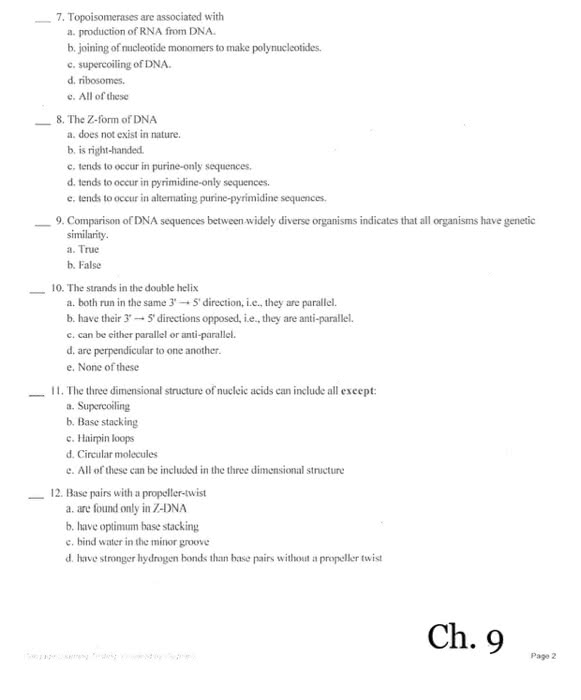BIOC 384 Chapter Notes - Chapter 2: Tetrapeptide, Genetic Recombination
Document Summary
Base stacking is the greater contributor to the stability of the dna double helix, than is the hydrogen bonding between base pairs. This is because when the double helix has been denatured, the hydrogen bonds between the base pairs have become the same number of hydrogen bonds between the bases and water molecules. Thus, the hydrogen bonds are similar in strength. Dna helix is more stable in water, then this can"t be the greater contributor to its stability. Base stacking contributes more to the stability of the dna double helix due to base stacking containing a high number of weak vdw interactions. Bases are also arranged in a hydrophobic manner, facing away from water to minimize exposure to the solvent. Since the bases are away from the water, there is less ordering of the water, which results in the favorable increase in entropy.



